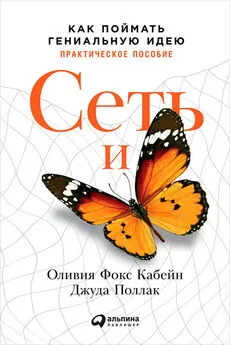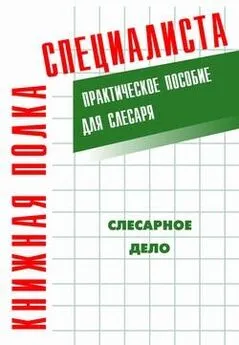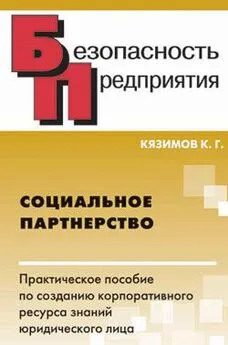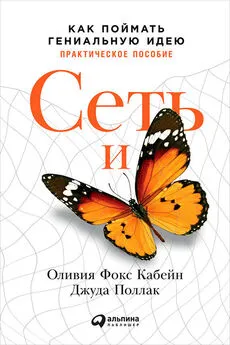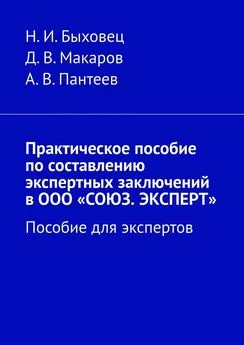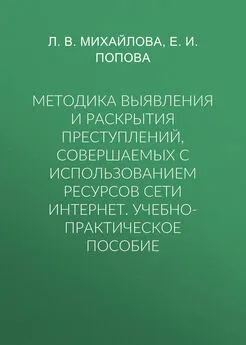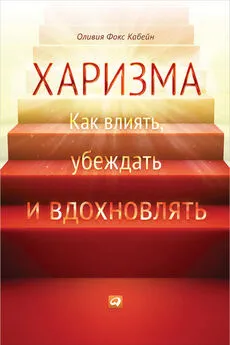Оливия Кабейн - Сеть и бабочка. Как поймать гениальную идею. Практическое пособие
- Название:Сеть и бабочка. Как поймать гениальную идею. Практическое пособие
- Автор:
- Жанр:
- Издательство:Альпина Паблишер
- Год:2017
- Город:Москва
- ISBN:978-5-9614-4966-2
- Рейтинг:
- Избранное:Добавить в избранное
-
Отзывы:
-
Ваша оценка:
Оливия Кабейн - Сеть и бабочка. Как поймать гениальную идею. Практическое пособие краткое содержание
Сеть и бабочка. Как поймать гениальную идею. Практическое пособие - читать онлайн бесплатно ознакомительный отрывок
Интервал:
Закладка:
Это заявление было сделано в книге Robert D. Ekelund, Robert F. Hébert, Robert D. Tollison, Gary M. Anderson, and Audrey B. Davidson, Sacred Trust: The Medieval Church as an Economic Firm (Oxford: Oxford University Press, 1996).
69
William C. Taylor, «What Hospitals Can Learn from the Ritz», Fortune, March 2, 2011.
70
Erik Weihenmayer, Touch the Top of the World: A Blind Man’s Journey to Climb Farther Than the Eye Can See (New York: Plume, 2002) и много других статей, включая обложку журнала Time.
71
Mandy Kendrick, «Tasting the Light: Device Lets the Blind ’See’ with Their Tongues», Scientific American, August 13, 2009, accessed March 15, 2014, www.scientificamerican.com/article/device-lets-blind-see-with-tongues.
72
Некролог «Founder: Paul Bach-y-Rita», Tactile Communication and Neurorehabilitation Laboratory, Department of Biomedical Engineering, University Wisconsin-Madison, 2015, tcnl.bme.wisc.edu/laboratory/founder.
73
Tony T. Yang, C. C. Gallen, V. S. Ramachandran, S. Cobb, B. J. Schwartz, and F. E. Bloom, «Noninvasive Detection of Cerebral Plasticity in Adult Human Somatosensory Cortex», Neuroreport: An International Journal for the Rapid Communication of Research in Neuroscience 5, no. 6 (1994), 701–4; Judy H. Song, Erica Skoe, Patrick C. M. Wong, and Nina Kraus, «Plasticity in the Adult Human Auditory Brainstem Following Short-term Linguistic Training», Journal of Cognitive Neuroscience 20, no. 10 (2008), 1892–1902.
74
Helen Thomson, «Woman of 24 Found to Have No Cerebellum in Her Brain», New Scientist, September 10, 2014, www.newscientist.com/article/mg22329861-900-woman-of-24-found-to-have-no-cerebellum-in-her-brain.
75
Christina M. Karns, Mark W. Dow, and Helen J. Neville, «Altered Cross-Modal Processing in the Primary Auditory Cortex of Congenitally Deaf Adults: A Visual-Somatosensory fMRI Study with a Double Flash Illusion», Journal of Neuroscience 32, no. 28 (July 11, 2012), 9626–38; Frédéric Gougoux, Robert J. Zatorre, Maryse Lassonde, Patrice Voss, and Franco Lepore, «A Functional Neuroimaging Study of Sound Localization: Visual Cortex Activity Predicts Performance in Early-Blind Individuals», PLoS Biology 3, no. 2 (2005): e27.
76
Frédéric Gougoux, Robert J. Zatorre, Maryse Lassonde, Patrice Voss, and Franco Lepore, «A Functional Neuroimaging Study of Sound Localization: Visual Cortex Activity Predicts Performance in Early-Blind Individuals», PLoS Biology 3, no. 2 (2005): e27.
77
Weihenmayer, Touch the Top of the World.
78
Bogdan Draganski, Christian Gaser, Volker Busch, Gerhard Schuierer, Ulrich Bogdahn, and Arne May, «Neuroplasticity: Changes in Grey Matter Induced by Training», Nature 427, no. 6972 (2004): 311–12; Arne May, Gören Hajak, S. Gänssbauer, Thomas Steffens, Berthold Langguth, Tobias Kleinjung, and Peter Eichhammer, «Structural Brain Alterations Following 5 Days of Intervention: Dynamic Aspects of Neuroplasticity», Cerebral Cortex 17, no. 1 (2007): 205–10.
79
Беседы с д-ром Джоном Лиффом, январь — март 2015 года.
80
Беседы с Астро Теллером, май 2015 года.
81
Jeffrey A. Kleim and Theresa A. Jones, «Principles of Experience-Dependent Neural Plasticity: Implications for Rehabilitation After Brain Damage», Journal of Speech, Language, and Hearing Research 51, no. 1 (2008): S225–39.
82
Cyrus K. Foroughi, Samuel S. Monfort, Martin Paczynski, Patrick E. McKnight, and P. M. Greenwood, «Placebo Effects in Cognitive Training», Proceedings of the National Academy of Sciences 113, no. 27 (2016): 7470–74; Lucinda S. Spaulding, Mark P. Mostert, and Andrea P. Beam, «Is Brain Gym® an Effective Educational Intervention?», Exceptionality 18, no. 1 (2010): 18–30; Jennifer Stephenson, «Best Practice? Advice Provided to Teachers About the Use of Brain Gym® in Australian Schools», Australian Journal of Education 53, no. 2 (2009): 109–24.
83
Sharon Eldar and Y. Bar-Haim, «Neural Plasticity in Response to Attention Training in Anxiety», Psychological Medicine 40, no. 04 (2010): 667–77.
84
Leo Babauta, Focus: A Simplicity Manifesto in the Age of Distraction (Grand Haven, Mich.: Brilliance Audio, 2011).
85
Все последующие ссылки на работу д-ра Келли Макгонигал: Kelly McGonigal, PhD, The Willpower Instinct (New York: Avery, 2012): 42.
86
Susan Burton, «Terry Gross and the Art of Opening Up», The New York Times, October 21, 2015.
87
Aymeric Guillot, Kevin Moschberger, and Christian Collet, «Coupling Movement with Imagery as a New Perspective for Motor Imagery Practice», Behavioral and Brain Functions 9, no. 1 (2013): 1.
88
Адаптировано из классической книги Итало Кальвино «Невидимые города», в которой Марко Поло развлекает Кублай-хана историями о разных волшебных городах в землях Хана, которые он посетил. Italo Calvino, Invisible Cities (New York: Harcourt Brace, 1978).
89
«Bicycle History from the Late 19th Century», America on the Move Exhibit, National Museum of American History, Smithsonian Institution, amhistory.si.edu/onthemove/themes/story_69_3.html.
90
Jon Gertner, The Idea Factory: Bell Labs and the Great Age of American Innovation (New York: Penguin, 2012).
91
Dennis Overbye, Einstein in Love: A Scientific Romance (New York: Penguin, 2001).
92
Личная беседа с Надей Дирековой.
93
EarthSky editors, «Sunni Robertson on How a Kingfisher Inspired a Bullet Train», EarthSky, June 29, 2012.
94
Abigail Doan, «BioMimetic Architecture: Green Building in Zimbabwe Modeled After Termite Mounds», Inhabitat, November 29, 2012.
95
Janine M. Benyus, Biomimicry: Innovation Inspired by Nature (New York: William Morrow, 2002).
96
Беседы с Сэнди Пентлендом, октябрь 2014 года.
97
Stacey Anderson, «When Keith Richards Wrote ’(I Can’t Get No) Satisfaction’ in His Sleep», Rolling Stone, May 9, 2011, www.rollingstone.com/music/news/when-keith-richards-wrote-i-cant-get-no-satisfaction-in-his-sleep-20110509.
98
Беседы с Томом Чи, март 2014 года.
99
Интересно отметить, что люди с сильной склонностью к катострофизации говорят о более сильной боли и даже могут отличаться по физической нейроанатомии. См.: Claudia M. Campbell, Kenny Witmer, Mpepera Simango, Alene Carteret, Marco L. Loggia, James N. Campbell, Jennifer A. Haythornthwaite, and Robert R. Edwards, «Catastrophizing Delays the Analgesic Effect of Distraction», PAIN® 149, no. 2 (2010): 202–7. Новые отчеты по исследованиям: «Наши данные свидетельствуют о том, что носители гена NPSR1 с T-аллелью склонны придавать чрезмерное значение своей условно-рефлекторной реакции страха по сравнению с теми, у кого Т-аллель отсутствует». См.: Karolina A. Raczka, Nina Gartmann, Marie-Luise Mechias, Andreas Reif, Christian Büchel, Jürgen Deckert, and Raffael Kalisch, «A Neuropeptide S Receptor Variant Associated with Overinterpretation of Fear Reactions: A Potential Neurogenetic Basis for Catastrophizing», Molecular Psychiatry 15, no. 11 (2010): 1067–74.
100
Rick Hanson, PhD, «Do Positive Experiences Stick to Your Ribs?», Take in the Good, June 1, 2015, www.rickhanson.net/take-in-the-good.
101
Личная переписка с Адамом Берманом, 2010–2012 годы.
102
Более точно: определенные участки нашего мозга используются как в реальном опыте, так и в воображении, и это экономичное использование мозга имеет побочный эффект в виде возникновения эмоций реального переживания.
103
Этот эффект настолько силен, что, как известно спортсменам, можно нарастить мышечную массу с помощью воображения. Erin M. Shackell, Lionel G. Standing, «Mind Over Matter: Mental Training Increases Physical Strength», North American Journal of Psychology 9, no. 1 (2007): 189–200.
104
Если хотите узнать об этом больше, мы с радостью можем порекомендовать вам работы Роберта Сапольски «Why Zebras Don’t Get Ulcers», в том числе его лекцию в iTunes.
105
Gretchen Cuda, «Just Breathe: Body Has a Built-in Stress Reliever», NPR, Morning Edition, December 6, 2010.
106
Личная переписка с доктором Филиппом Голдином, 2013 год.
107
David Rock, «SCARF: A Brain-Based Model for Collaborating With and Influencing Others», NeuroLeadership Journal 1 (2008).
108
Leonardo C. De Souza, Henrique C. Guimarães, Antônio L. Teixeira, Paulo Caramelli, Richard Levy, Bruno Dubois, and Emmanuelle Volle, «Frontal Lobe Neurology and the Creative Mind», Frontiers in Psychology 5 (2014); Bruce L. Miller, Kyle Boone, Jeffrey L. Cummings, Stephen L. Read, and Fred Mishkin, «Functional Correlates of Musical and Visual Ability in Frontotemporal Dementia», British Journal of Psychiatry 176, no. 5 (2000): 458–63; Bruce L. Miller, Marcel Ponton, D. Frank Benson, J. L. Cummings, and I. Mena, «Enhanced Artistic Creativity with Temporal Lobe Degeneration», Lancet 348, no. 9043 (1996): 1744–45; Bruce L. Miller, J. Cummings, F. Mishkin, K. Boone, F. Prince, M. Ponton, and C. Cotman, «Emergence of Artistic Talent in Frontotemporal Dementia», Neurology 51, no. 4 (1998): 978–82.
109
John Martyn Harlow, «Recovery from the Passage of an Iron Bar through the Head», Publications of the Massachusetts Medical Society 2, no. 3 (1868): 327–47 (Boston: David Clapp & Son, 1869, repr.).
110
«A Most Remarkable Case», American Phrenological Journal and Repository of Science, Literature, and General Intelligence, Fowler & Wells 13, no. 4 (April 1851): 89, col. 3.
Читать дальшеИнтервал:
Закладка:
